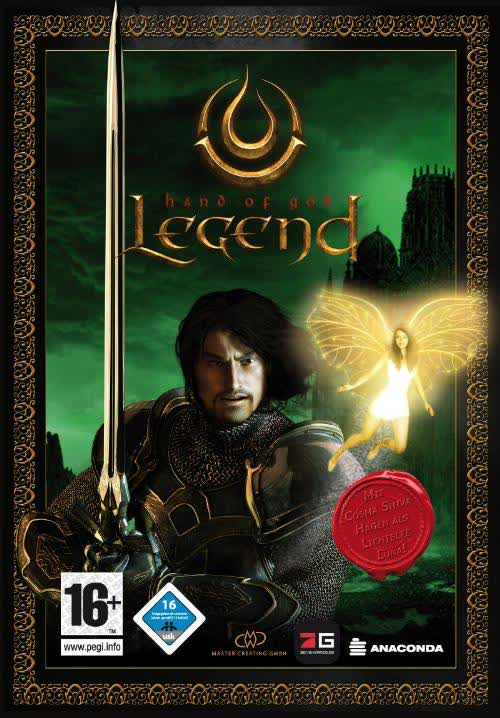
Legend Hand Of God Review
Action RPGs may be a ubiquitous these days, but there is always room for another oneif it brings something new to the table or nails that good old Diablo formula. Unfortunately, developer Master Creating’s attempt to both innovate and satisfy tradition has been waylaid by flaws in Legend: Hand of God’s design and execution. Repetitive battles, dull maps, no multiplayer, and some serious bugs make Legend a less than optimal choice to kill a couple dozen hours between now and the still depressingly far-off release of Diablo III. You might not be able to get the game running in the first place, as Legend has some serious bugs in its implementation of PhysX, Nvidia’s separately-installed physics software. It constantly aborted during startup on our test machine, dropping back to the desktop with the error message that PhysX couldn’t be initialized. Trying various Nvidia video and PhysX drivers did nothing to solve this problem.
Only a last-ditch Google search hit pay dirt, coming up with the advice that you could work around the PhysX error by deleting the PhysXCore.dll file in the game directory. So, lots of fun. It’s hard to tell if this is an Nvidia or a Legend issue, but the end result is a lot of unnecessary frustration. Going through so much hassle isn’t exactly worthwhile, either, considering the cliched game design. Everything here is uninspired.
You play Targon, a typical studly RPG hero, who’s out to rid his medieval fantasy world of Aris of a nasty demon infestation. The key to shutting down a recently established demonic mass transit system is–you guessed it–the Hand of God. This mystical MacGuffin is the only thing that can seal the portal that the demons are using, but, of course, the artifact has been broken into three pieces and hidden throughout the land. Your mission is to track down these shards, reforge the Hand of God, and use it to chase the flaming guys with horns back down to hell. Sound familiar?
By Zeus Poplar, Official Out of Eight Adventure and RPG Correspondent Legend: Hand of God, developed by Master Creating and published by ValuSoft on Gamer’s Gate. The Good: Superb combat animations, a handy side-kick, decent hack’n’slash gameplay The Not So Good: Buggy audio, a skills tree in desperate need of watering What say you? A great looking game in the tradition of Diablo, if.
The storytelling is straightforward, at least. Legend lays out the demon-horde angle from the moment the action begins and gets you started on the hunt for the Hand of God at the end of the first major quest, so at least there isn’t any cheap attempt to make this derivative tale seem loftier than it really is.Gameplay mechanics are equally uncomplicated. Character development is certainly clear-cut, as you choose two skill paths from five total choices presented at the start of the game. This essentially allows you to mold Targon into a dual-class character, blending traits of the warrior, mage, cleric, thief, and ranger.
Select the paths of wilderness and the warrior, for instance, and you create a ranger good with bows. Skills are doled out in trees based on these paths, and they can be purchased with points earned every time you level up. So warriors choose from the likes of battle tactics and weapon block, mages pick from abilities such as fireball and ice arrow, villains take feint and deadly blow, and so forth.
There aren’t a great deal of choices in these trees, though. Each features just 12 options, which leaves you without much ability to seriously customize your character. At any rate, you generally buff your take on Targon with most of the skills on offer, and take one or two special abilities that you’ll lean on during combat throughout the entire adventure.Not that you could do much with a heavily customized character in the dreary levels of Legend. There isn’t enough differentiation between character paths and skills to allow you to mix up fighting styles or get into even the rudimentary tactical thinking emphasized by some action-oriented RPGs. Battles are monotonous slogs that always come down to how fast you can click the left mouse button and suck down health potions, so it doesn’t much matter whether you’re a battlemage or a cleric or a thief.
Monster types vary little, as well. You never have to think much about what you’re battling, as all creatures in the game fight in pretty much the same fashion no matter what they look like. Altering your battle strategy isn’t necessary whether you’re taking on thieves or goblins or bears or giants.
Random maps underline this monotony. Maps are created on the fly for each game, but this good idea backfires because such randomization breaks the terrain down to collections of anonymous grassy fields and rocks brought to life with a visual engine at least five years out of date. Static maps with interesting architecture would be a lot more compelling than this generic topography, which is so boring that it’s impossible to tell one region from another.
